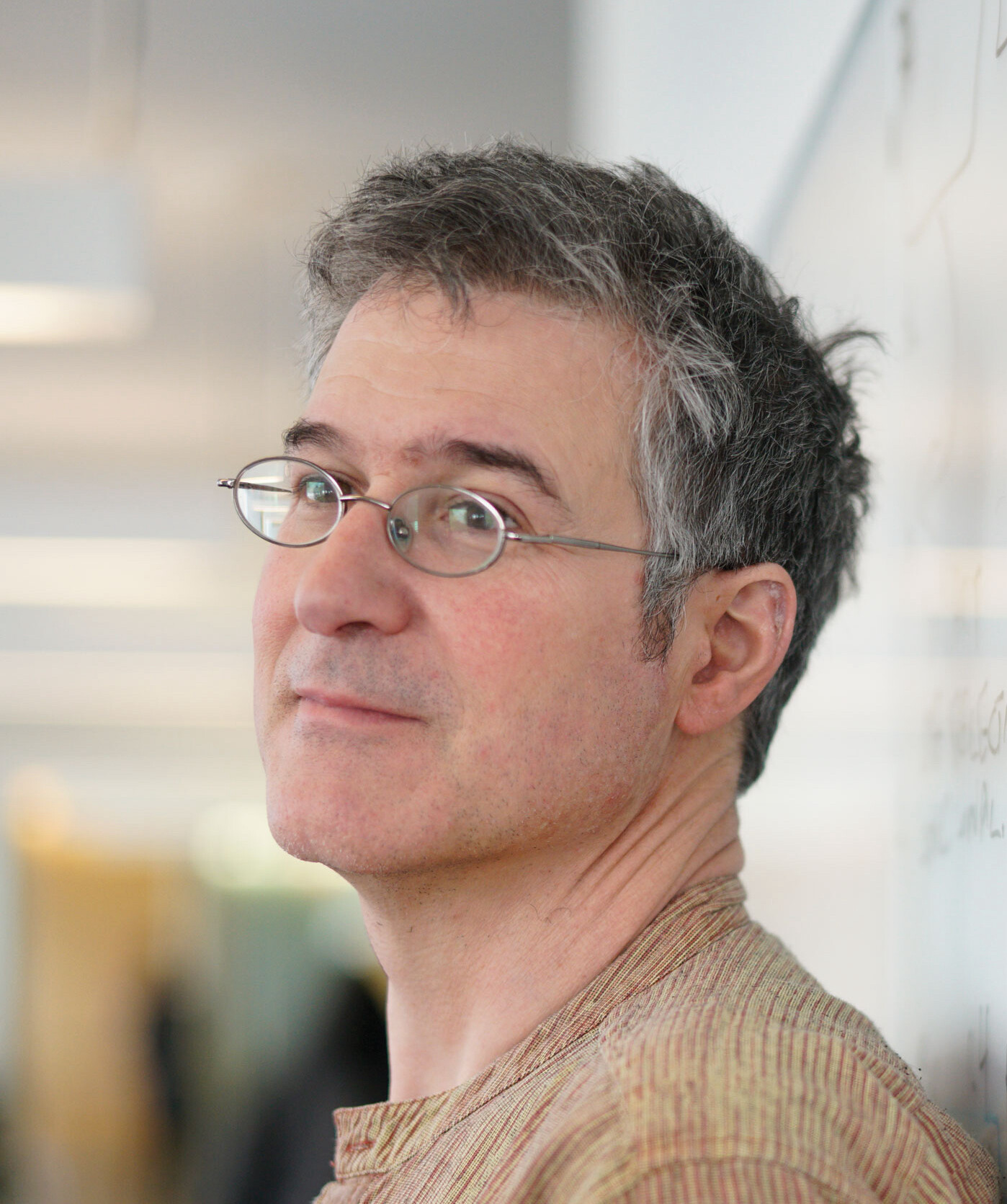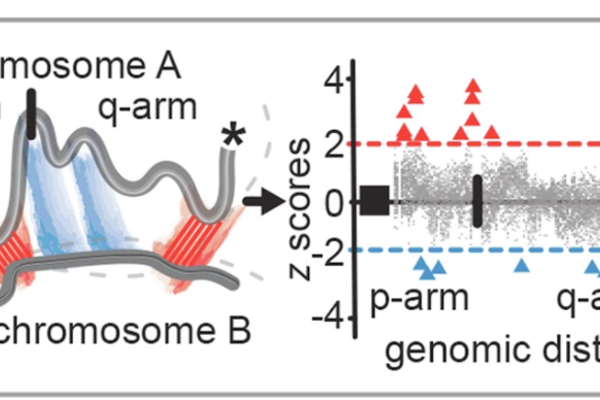Main Second Level Navigation
Breadcrumbs
- Home
- About
- News & Events
- News
- MedGen Faculty Spotlight: Dr. Lincoln Stein
MedGen Faculty Spotlight: Dr. Lincoln Stein

Dr. Lincoln Stein is the head of the Adaptive Oncology theme at the Ontario Institute for Cancer Research (OICR). He completed the MD-PhD program at Harvard Graduate and Medical Schools in 1989, doing his doctoral thesis in Cell Biology. After completing his residency in anatomic pathology at Brigham and Women’s Hospital in Boston MA, Stein performed diagnostic clinical work there for five years. Dr. Stein has made several landmark contributionsto cancer genomics and biomedical research, including working to develop the first physical clone map of the human genome, which he did as director of informatics under Dr. Eric Lander at the MIT Whitehead Institute for Biomedical Research in Cambridge, Massachusetts. Stein was named one of the World’s Most Influential Scientific Minds by Thompson Reuters (2014), a Fellow of the International Society of Computational Biology (2016), and was awarded the Canadian Cancer Research Alliance’s Outstanding Achievements in Cancer Research Award (2019). The University of Toronto Medical Genomics master’s program is very fortunate to have Dr. Stein as a professor for the course MMG3002Y: Biological Statistics
Moving away from his clinical practice into the sweeping domains of computational biology and cancer genomics was driven by Stein’s desire to combine his two passions: biological research and software development. He recalls becoming really fascinated with personal computers during his undergraduate and graduate work, which had become a hobbyist interest in software development by the time Stein entered medical school. Lincoln was a self-taught programmer at the time, completing various software development projects which helped financially support him throughout medical school. These projects included developing software for the Radiology department at Brigham and Women’s Hospital and providing ultrasound analysis tools for the Framingham heart study.
After connecting with a researcher named Dr. Nathan Goodman, who also worked under Dr. Eric Lander at the MIT Whitehead Genome Center, Dr. Stein found himself involved in the massive undertaking of developing the first physical clone map of the human genome. Mapping the human genome was a prerequisite to allowing clinical geneticists and biomedical researchers to sequence it in a targeted way. Stein notes, “This is in the day when genome sequencing was very expensive, and you could only sequence a small portion of the genome at a time.” He continued, “it was imperative to [..] be able to know where you were in the genome and sequence in a targeted way.” The group at MIT generated a physical clone map made from yeast artificial chromosomesthat had been carefully sorted by position to form a contiguous human genome. To validate the sorting, Stein and colleagues printed the artificial chromosome maps out on an architectural printer, which generated long scrolls that were longer than the conference table they gathered at to assess it. Stein led the informatically-heavy task of removing regions of overlap between artificial chromosomes and correcting contradictions due to recombination. Completing this task took over a year and caused him to delay his cytology fellowship before finally deciding to forgo the fellowship altogether to pursue Bioinformatics instead. He took a job as a research assistant and assistant professor in 1998 at Cold Spring Harbor Laboratory in Long Island, New York, where he did bioinformatics until 2004.
Prior to the creation of Reactome (2011), which Dr. Stein considers to be his most impactful contribution to bioinformatics, the ‘CGI’ software that he wrote in the Perl programming language gave bioinformaticians a big boost. It allowed scientists to display their internal analysis and visualization algorithms online on web browsers. The highly cited open-source genetic database Reactome has transformed the sharing of bioinformatic data by organizing human pathways and biochemical reactions into a comprehensive, open-access resource accessible both in human and machine-readable forms: “Reactome has been reviewed by curators and peer reviewed by other PhD level scientists.” Stein talked about Reactome as a collaborative project that involves multiple groups each with its distinct role: “My group does curation, the database and the quarterly releases, Guanming Wu's group at OHSU develops analytic and visualization components, Henning Hermjakob at the European Bioinformatics Institute does the web front end, and Peter D'Eustachio at NYU handles the editorial aspects of the project.” Stein was involved in large-scale data coordination for the SNP and HapMap Consortiums and led the development of Wormbase, which contains curated sequence-level and transcriptomic data on the C.elegans model organism (and other nematodes).
In 2007, Stein became the program director of Informatics and Bio-computing at Ontario Institute for Cancer Research. At OICR, Stein's research focuses on using network and pathway-based analysis to define underlying molecular mechanisms common to multiple cancer types. Stein’s group then devises prognostic and predictive signatures to monitor cancer progression and improve patient care. In a 2014 publication to Nature that Stein co-authored alongside members from John Dick’s lab, the group uncovered a pre-leukemic genetic change in the DMNT3A gene(which encodes a DNA methylase), which was found to be present in 50% of individuals of age 70 and older. The paper outlines how the pre-leukaemic change was first identified in haematopoietic stem cells of the bone marrow, and it was the first clue to unmasking a core biological phenomenon of aging that we now understand as clonal haematopoiesis. As humans age, certain stem cell progenitor cells experience a slight growth advantage and begin to take over the bone marrow. The impact of clonal haematopoiesis is seen as a drop in the overall diversity in the blood of aging individuals, and accumulation of somatic mutations among certain clonal blood cell populations. The specific DMNT3A genetic variation discussed here is associated with an increased risk of developing acute myeloid leukaemia (AML) and cardiovascular disease.
Dr. Stein’s current research interest is identifying the cells of origin of cancer, which he defines as an aberrant developmental pathway originating from one cell of origin. He is working with wet lab collaborators to create developmental maps of vertebrate species. By tracking brain development in mice, and matching mouse cerebellar tumours to human adult and pediatric samples using genetic sequencing, Stein and his collaborators are working to understand the early events that initiate development of brain cancer better. One of the challenges of interpreting DNA sequence data retrieved from cancerous samples is that they often contain thousands of chromosomal rearrangements. To investigate the high mutational load of cancer, computational algorithms are increasingly being utilized. Stein cites computational tools as being the “single most powerful way of identifying ‘drivers’,” or underlying alterations in a patient’s DNA that drive tumour growth. Unlike passenger mutations, which do not have a direct functional impact on carcinogenesis, driver mutations are easier to identify: “You tend to see a cluster of driver mutations over an important functional element.” He used the p53 tumour suppressor gene as an example: “p53 has multiple places where you [can] have high functional impact hits. You have the promoter, you have the enhancer, and you have all the coding sequence. And so, if you look for clustering around p53, that indicates [presence of drivers] as well.” As scientists train their statistical models on multiple ‘best prediction criteria’, and sequencing data becomes more available, computational algorithms are learning to distinguish driver mutations from passengers with greater accuracy.
The main thing that motivates Dr. Lincoln Stein is organizing and facilitating the sharing of scientific data. As a course instructor for MMG3002Y: Biological Statistics, Dr. Stein teaches Medical Genomics masters students the ins and outs of using large scale infrastructure like the SciNet compute cluster to work with large genomics datasets. The biostats course also teaches key concepts in statistical modelling and machine learning, which are utilized by students in their assignments to analyze complex genetic information. The Medical Genomics master’s program at UofT is very lucky to have Dr. Stein as a course instructor.
We would like to extend a massive thank you to Dr. Lincoln Stein for his incredible contributions to scientific research and to the MHSc Medical Genomics program, and wish him all the best with his continued research!


